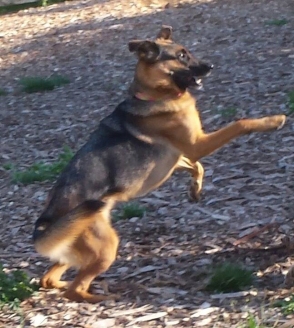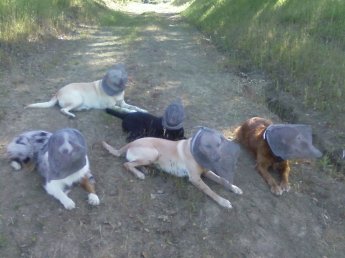One of the most useful commands I teach is “go to your place”. It’s a simple command to teach, but it takes a lot of “proofing” (by proofing I mean practicing it in all kinds of challenging situations). You must always put your dog back in the designated place immediately when they “self-release” (decide they can get up even though you didn’t say so). Alternatively, you can banish them from your presence for an hour or two. Here’s how to teach the command.
Start by teaching “down” on command. Once the dog is consistently doing down on command, begin asking them for that command in new places and situations. This gets your dog used to downing even when there are a lot of stimulating things going on around him.
Next, teach the “down-stay”. Ask your dog to down and tell them to stay. Stand near them. Reward if they stay until you release them. I start with about a minute with no distraction and build on this. Gradually lengthen the time they are staying until you can ask them for down-stay and they will stay for 10 minutes.
Gradually add distraction and also move around; maybe go out of their sight. Have someone watch for you or use a mirror so you can correct if they break their stay. It’s important to keep the dog in the stay until they are released and not let them get up and move.
 After practicing these things, you can assign them a “place.” I use a dog bed in my living room. Where ever you choose to have their place, it should be easy to check if they are staying and positioned in an area where you are nearby at least some of the time.
After practicing these things, you can assign them a “place.” I use a dog bed in my living room. Where ever you choose to have their place, it should be easy to check if they are staying and positioned in an area where you are nearby at least some of the time.
Give the command “go to your place.” Walk the dog to his place and ask them to down and stay. Give a treat. Release the dog and repeat. You will probably be surprised how quickly they understand the behavior of walking or running to their place and going into a down.
Now comes the hard part: “stay”. Start this practice with 10 or 15 minutes in their place and you going about your normal routine. Remember, you have to watch them so they don’t break the stay. As soon as the dog is doing great on this, we make it harder.
Always be vigilant or cheat by using a tie-down if you are busy and not able to be vigilant. The tie-down won’t replace vigilant work entirely but it will help strengthen the habit of staying in their place.
Next step: ask your kids, husband or a friend to go out and ring the doorbell. If your dog breaks the stay correct them and put them right back where they belong. I like to train this before trying to get a real visitor in the house with the dog doing its place command.
Take Aways:
- Teach this and any other complex commands in stages.
- Practice with the down-stay in many situations and with varying levels of distraction before expecting the dog to do a good solid “place” command.
- Even after the dog understands “go to your place” there will be work to do on the stay in that place.
- Don’t let the dog break their stay!
- Always release and reward the dog at the end of the lesson!

 on your own, gradually add easy distractions and possibly a destination. If you are successful with small distractions you can start to add more difficult challenges.
on your own, gradually add easy distractions and possibly a destination. If you are successful with small distractions you can start to add more difficult challenges. attention no matter how determined you are to ignore him, and being climbed like a tree is not good fun. Those toenails are sharp.
attention no matter how determined you are to ignore him, and being climbed like a tree is not good fun. Those toenails are sharp.

 d of misery. They get into your running shoes or hiking boots, work their way into your socks, and even work their way up your pant legs
d of misery. They get into your running shoes or hiking boots, work their way into your socks, and even work their way up your pant legs